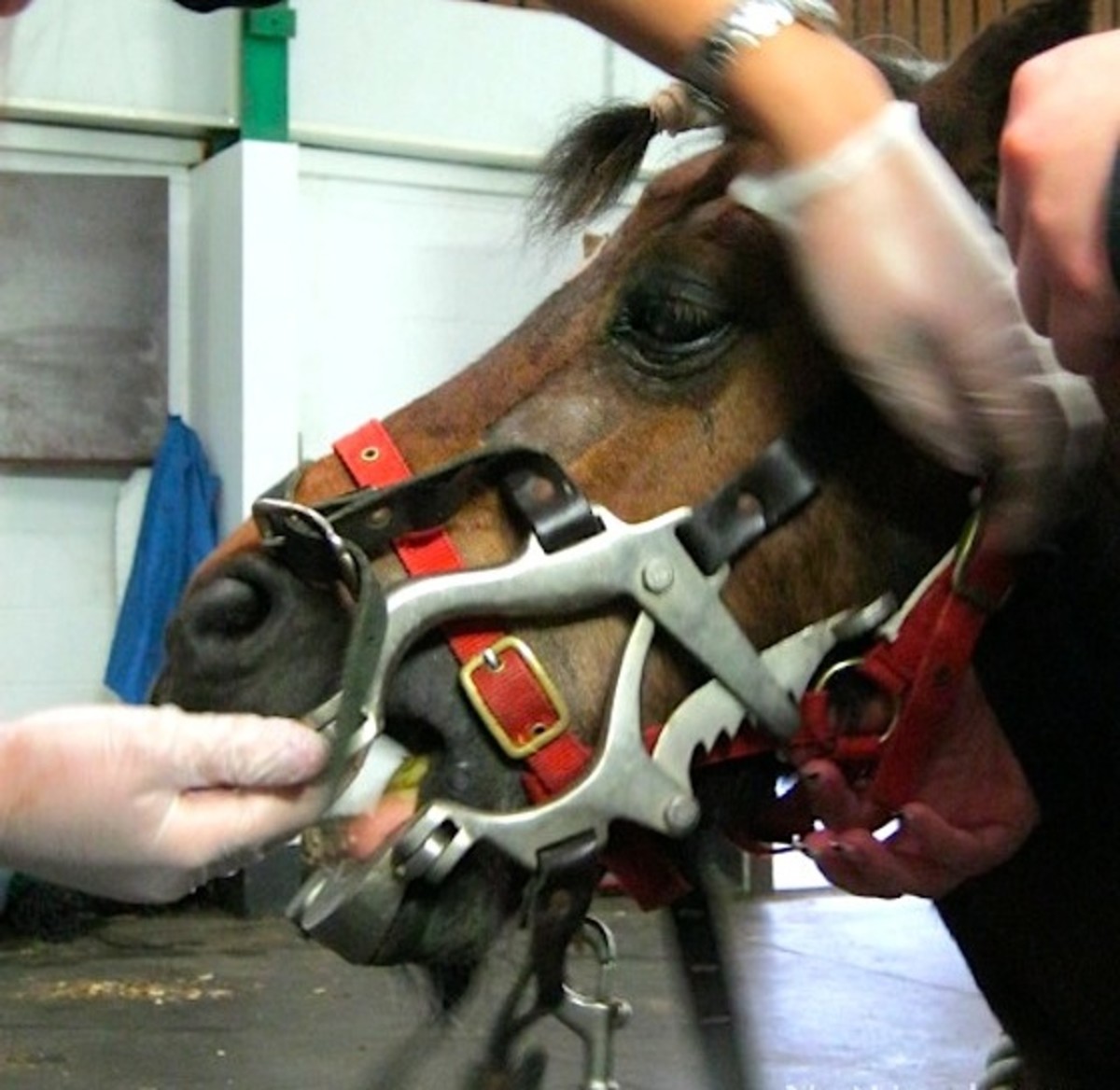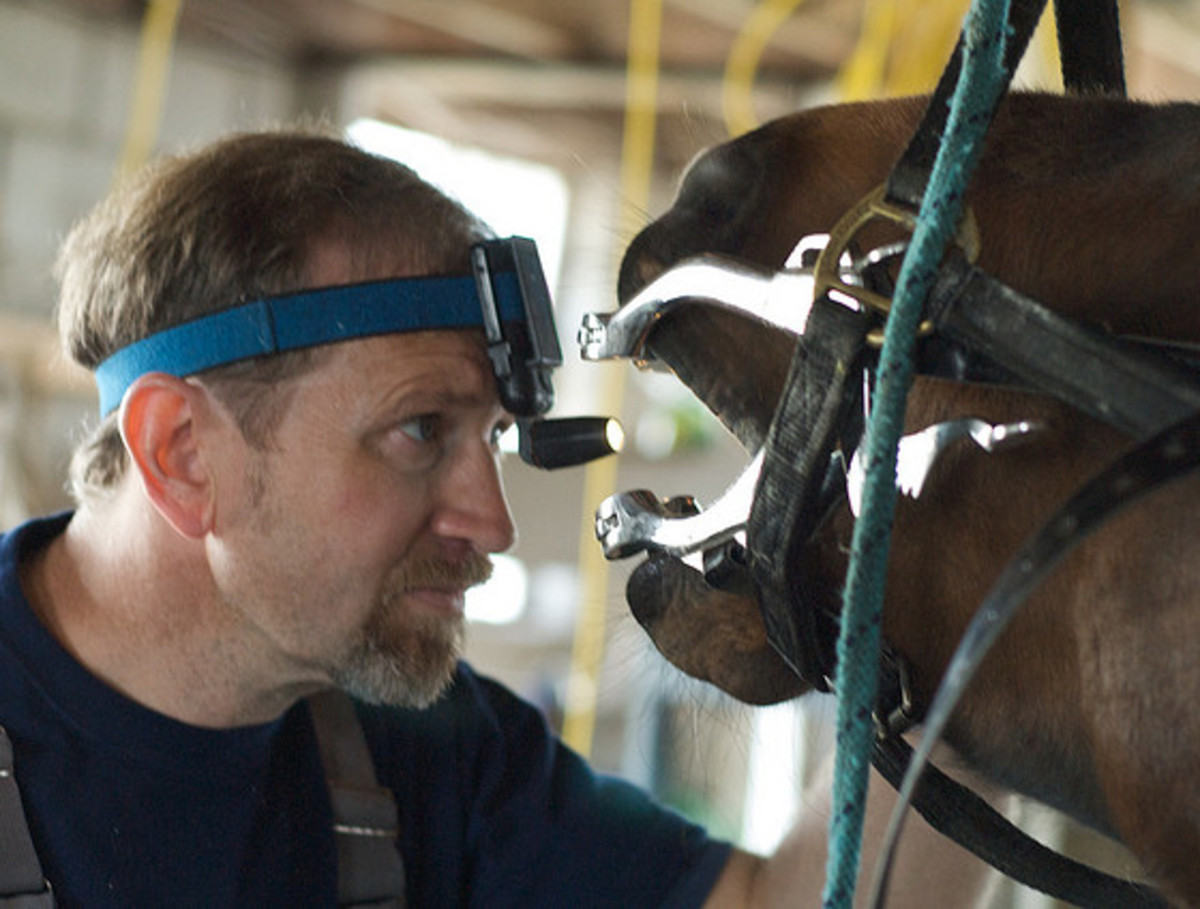Equine Dentists, Veterinary Associations Reach Accord on Professional Standards in Great Britain
- March 10, 2017
- ⎯ Fran Jurga
In the United States, equine dentists and veterinarians take their disagreements over professional standards to court. In Great Britain, there’s a chance that the inside of a horse’s mouth won’t have to see the inside of a courtroom as two professional organizations have worked out standards of care that are mutually agreeable.

Recent action by the British Equine Veterinary Association (BEVA) and the British Association of Equine Dental Technicians (BAEDT) should make it safer and easier for owners to source the most suitable dental treatment for their horses in every circumstance.
The organizations are working in association with the Royal College of Veterinary Surgeons (RCVS), British Veterinary Association (BVA), British Veterinary Dental Association (BVDA), WorldWide Association of Equine Dentistry (WWAED) and training agency LANTRA to develop National Occupational Standards that will pave the way to allowing equine dental technicians the freedom to work within British law under an exemption order.

Currently in Britain, all equine dental care falls within the Veterinary Surgeons Act 1966 (VSA) and, as such, would require that dentistry be carried out by veterinary surgeons. Equine vets from BEVA and equine dental technicians from the BAEDT have been trying to address this anomaly with government for many years.
In 2004, the organisations drew up a list (which was revised in 2009) of procedures that could be safely carried out by suitably-qualified equine dental technicians and a list of those which should only be carried out by qualified veterinary surgeons because they involve sensitive tissues.
According to a statement from BEVA, the envisaged “Exemption Order” will also provide better protection for horses and their owners by reinforcing the fact that only suitably qualified individuals are allowed to carry out equine dental care and treatments. While unqualified individuals should become easier to identify under the proposed new scheme, those qualified will also be held to account if their performance is not up to scratch.

The first step towards the Exemption Order is the drawing up of National Occupational Standards for Equine Dental Technicians. It is hoped that these will be formalised by national training agency LANTRA in early 2013.
BEVA provided the following quotes from stakeholders in both professions:
BEVA President?Keith Chandler said, “After many years of working closely with the BAEDT on the continuing education and qualification of its members, we are thrilled that progress is finally being made towards an Exemption Order.”
BAEDT Chair Gemma Lilly continued: “BAEDT and its membership is very happy to be a key part of the team that hopes to put the Exemption Order in place – it will be good news for equine dental technicians, horse owners, and their animals.”
Equine Dental Technician and member of the Worldwide Association of Equine Dentists, Martin Brookes, also supports the initiative. He said: “This will be a really important step forward for responsible Equine Dental Technicians. It will further improve the working relationships between EDTs and vets and help to protect the welfare of the horse.”
What’s different in the USA? Each of the 50 states has its own Veterinary Practice Act, which may or may not specifically define the scope of equine dentistry and the individual roles of veterinarians and technicians, also called equine dentists. At the root of the US controversy over the practice has been both the scope of services that a non-veterinarian dentist may provide and the coming-of-age of power tools for equine dentistry and the resulting requirement for horses to be sedated for treatment.









